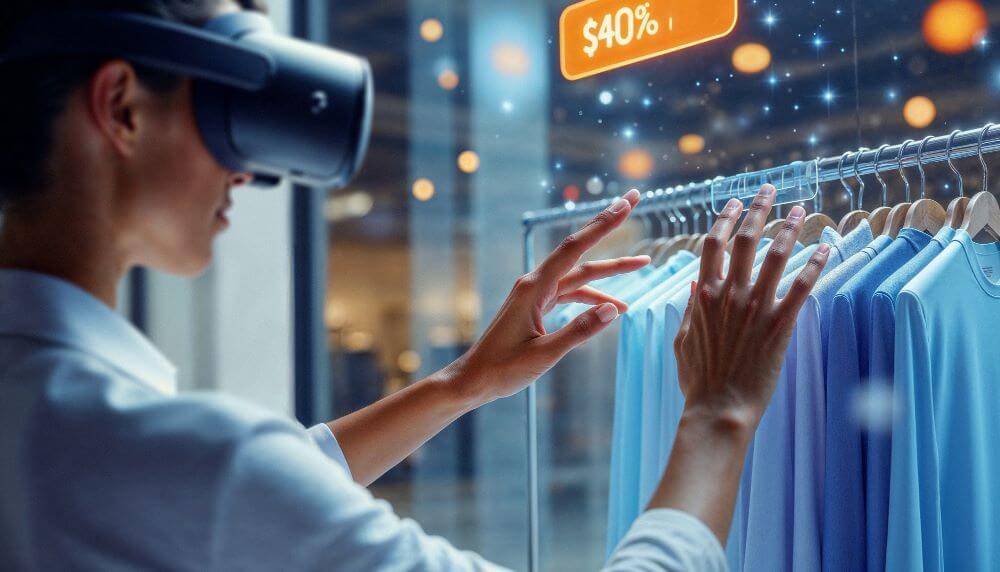In today’s rapidly evolving retail landscape, the lines between physical and digital experiences are blurring—and augmented reality (AR) is at the heart of this transformation. Retailers are increasingly turning to using augmented reality in retail as a strategic advantage to engage customers, personalize experiences, and ultimately drive sales. What once seemed like futuristic fantasy is now becoming a standard tool in the modern shopper’s journey.
The AR Advantage in Retail
Augmented reality overlays digital information—such as images, animations, or data—onto the real world through smartphones, tablets, or AR glasses. In retail, this technology is being used to enhance everything from trying on clothes virtually to visualizing furniture in a living room. The appeal is obvious: it empowers customers to interact with products in meaningful ways before they buy.
For example, beauty brands like Sephora and L’Oréal offer AR-powered virtual try-on tools that let customers see how makeup will look on their faces using only a smartphone camera. Similarly, IKEA’s Place app allows users to see how a new couch or table will fit into their space before they make a purchase—taking much of the guesswork and anxiety out of online shopping.
This immersive, interactive layer transforms static browsing into dynamic exploration. Customers become participants rather than observers, and that shift often translates into greater confidence and higher conversion rates.
Redefining Customer Engagement
One of the biggest challenges in retail today is engagement. With attention spans shrinking and competition intensifying, brands must find ways to stand out. AR provides a novel and entertaining way to capture and hold a shopper’s attention.
Retailers can create interactive in-store experiences using AR to make shopping more than just a transaction. For instance, Timberland implemented an AR-powered virtual fitting room in their stores that let customers see how clothes looked without having to change physically. This not only adds convenience but also turns a regular store visit into an experience worth sharing.
Online, AR tools help bridge the gap between product discovery and decision-making. Product pages are no longer just images and bullet points—they become digital playgrounds. A customer shopping for a new pair of sneakers can see how they look on their feet through their phone camera, rotate them in 3D, and even receive AI-driven styling suggestions. That level of interactivity brings the online experience closer to the tactile satisfaction of in-store shopping.
Boosting Confidence and Reducing Returns
A major concern in e-commerce is product returns. According to some industry reports, online retailers experience return rates as high as 30%, often due to unmet expectations or inaccurate product representation. AR dramatically reduces this uncertainty.
By allowing customers to try before they buy—virtually—AR provides a clearer understanding of product size, color, and functionality. Whether it’s seeing how a lipstick shade complements skin tone or ensuring a dining table fits within kitchen dimensions, this transparency builds trust. Brands using AR are already seeing notable reductions in return rates, leading to savings in logistics and improved sustainability outcomes.
Data-Driven Personalization
Every AR interaction is a data opportunity. Retailers can gather insights into customer behavior—what products they try on, how long they engage, what colors they prefer—and use this data to refine offerings and personalize future experiences.
For instance, if a customer regularly uses AR to try on certain shoe styles or colors, the retailer can serve them curated suggestions next time they visit the site. Combined with AI, AR becomes a powerful personalization engine that not only reacts to customer behavior but anticipates it.
Barriers and Breakthroughs
Despite its promise, AR in retail isn’t without challenges. High development costs, technological limitations, and the need for customer education can slow adoption. Not every customer is tech-savvy, and some may be hesitant to download another app or point their phone at their face or room.
However, these barriers are quickly eroding. As AR technology becomes more accessible and intuitive, retailers are integrating it directly into mobile websites and social media platforms—no app required. Platforms like Instagram and Snapchat already offer AR try-on experiences, making adoption frictionless and familiar.
Moreover, as smartphones become more powerful and 5G connectivity improves, AR experiences are smoother, more responsive, and more realistic. This opens the door for even smaller retailers to jump in and innovate.
The Future of AR in Retail
Looking ahead, AR is likely to evolve from a novel add-on to a core component of retail strategy. Mixed reality shopping malls, personalized holographic store assistants, and virtual storefronts in the metaverse are all within reach. Forward-thinking brands that invest in AR today aren’t just upgrading their tech—they’re future-proofing their business.
As consumer expectations shift toward convenience, personalization, and experience, AR offers a compelling answer. It’s not about replacing human interaction or eliminating physical retail; it’s about enhancing every touchpoint in the customer journey.
Conclusion
Using augmented reality in retail is no longer a bold experiment—it’s becoming a baseline expectation. The brands that thrive in the next era of commerce will be those that embrace AR not just as a gimmick, but as a transformative tool for delivering value, delight, and connection. In a world where attention is fleeting and choices are endless, AR offers retailers something priceless: a chance to truly stand out.






